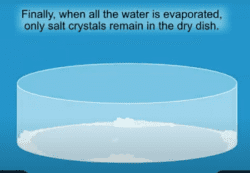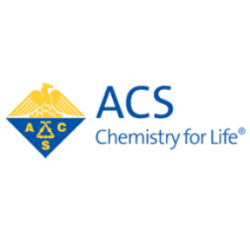Students dissolve salt in water and allow the water to evaporate to investigate the question: What process causes salt to dissolve in water and then the water to evaporate?
Objective
Students will be able to develop and explain a particle-level model to describe their observations of water dissolving salt, the water evaporating, and the salt crystals re-forming.
Key Concepts
- Dissolving a solid in a liquid depends on the interactions and attractions between the molecules of the liquid (solvent) and the particles of the solid (solute).
- Dissolving happens when the attraction between the particles of the solvent and solute are strong enough to overcome the attraction of the particles of the solute for one another.
- Evaporation happens when water molecules move fast enough to break away from a solution and move into the air.
- When a solution evaporates, the water goes into the air but the solid is left behind.
NGSS Alignment
- NGSS 5-PS1-1: Develop a model to describe that matter is made of particles too small to be seen.
Summary
- Students continue exploring the particle nature of matter by first dissolving salt in water, then allowing the water to evaporate, and finally observing the solid salt left behind.
- After viewing a model of salt, students help develop models for the processes of salt dissolving, water evaporating to form a gas, and salt re-forming as a crystal.
- The focus is that matter, whether solid, liquid, or gas, is made up of particles; that dissolving and evaporation happen at the particle level; and that models can help explain these processes that we cannot see.
Evaluation
Download the student activity sheet and distribute one per student when specified in the activity. The activity sheet will serve as the Evaluate component of the 5-E lesson plan.
Back to Fifth Grade Lessons




